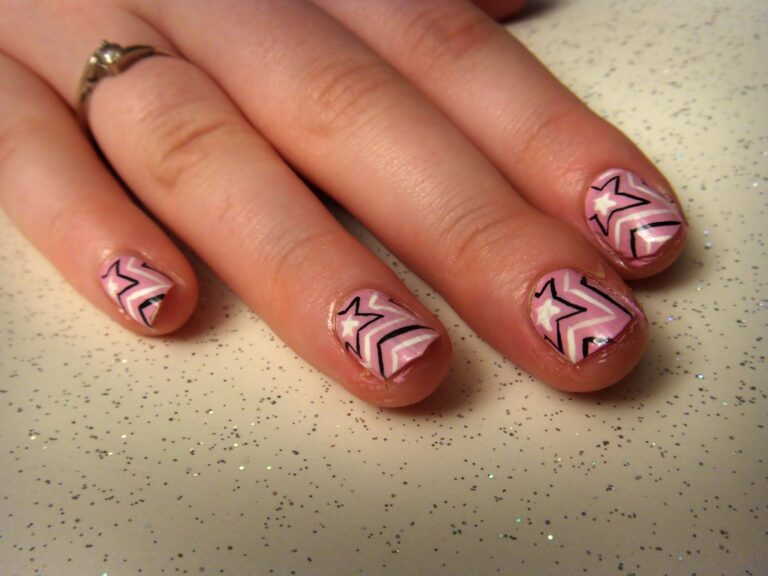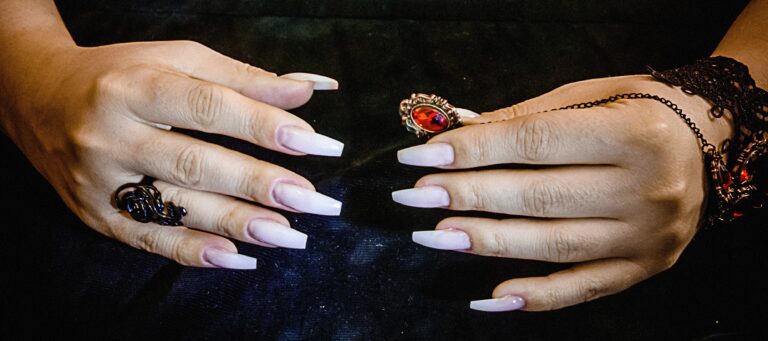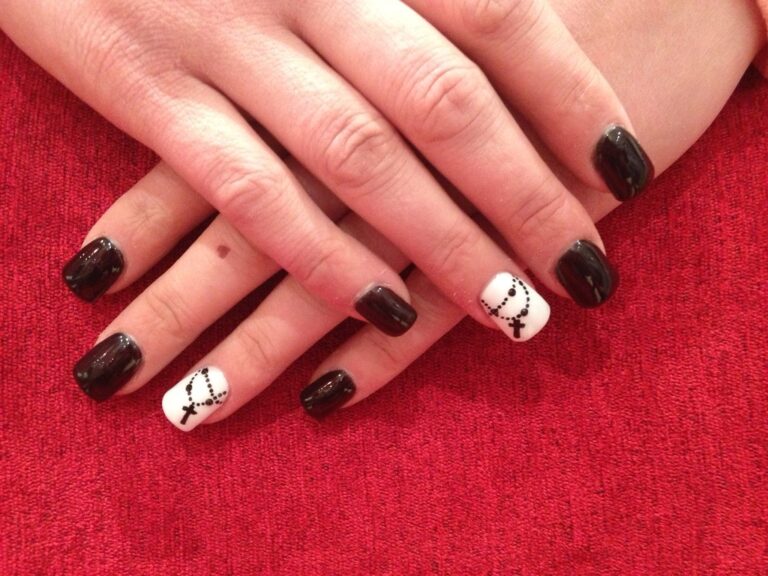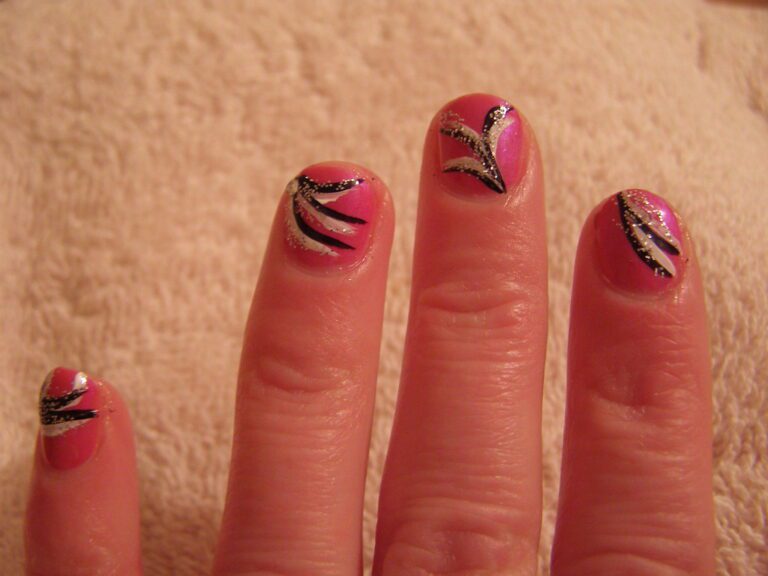“Ridge Revelations: Why Nails Have Ridges Unveiled”
Nail ridges have long been a topic of curiosity, prompting questions about their causes and implications for our health. In this article, we will delve into the science behind nail ridges, exploring their origins, potential health indicators, and dispelling common myths. By the end, you’ll have a clearer understanding of why nails have ridges and how to manage them effectively.
Key Takeaways
- Nail ridges can be caused by genetic factors, age-related changes, and nutritional deficiencies.
- Nail ridges may indicate underlying health conditions and should be monitored for changes.
- Common myths about nail ridges, such as their association with calcium deficiency, are debunked.
- Effective nail care routines and professional treatments can help manage and improve the appearance of nail ridges.
- Seeking medical advice for persistent or severe nail ridges is essential for proper diagnosis and treatment.
Unraveling the Mystery of Nail Ridges

Defining Nail Ridges: A Closer Look
Nail ridges are subtle lines or grooves that run either vertically or horizontally across the nail plate. While often considered a cosmetic concern, these ridges can be indicative of various health conditions. A fingernail ridge is essentially a depression in the nail, which can manifest as uneven, bumpy, or raised areas.
The appearance of nail ridges can vary greatly from person to person. Some may experience them as fine lines that are barely noticeable, while others might find them more pronounced and textured. It’s important to differentiate between the two primary types of ridges: vertical (longitudinal) and horizontal (transverse). Vertical ridges are common and usually harmless, running from the cuticle to the tip of the nail. Horizontal ridges, on the other hand, may signal an underlying health issue and warrant further investigation.
Tip: Consistent nail care and hydration can help minimize the appearance of nail ridges, but sudden changes in nail texture should be evaluated by a professional.
Understanding the nature of nail ridges is crucial for determining the appropriate care or treatment. Below is a list of characteristics that can help identify the type of ridges present:
- Vertical ridges often deepen with age.
- Horizontal ridges could indicate stress or trauma to the nail bed.
- Discoloration or accompanying symptoms may suggest a health concern.
By closely examining these features, one can better understand the potential causes and implications of nail ridges.
The Anatomy of the Nail: Understanding the Surface
The surface of the nail, often taken for granted, is a complex structure that plays a crucial role in protecting the delicate tissues of the nail bed. The nail plate is the hard, translucent part of the nail, made of densely packed cells containing keratin, a tough protein also found in skin and hair. It’s this keratin that gives nails their strength and resilience.
Beneath the nail plate lies the nail bed, a layer of skin that nourishes and supports the nail plate. The cuticle, or eponychium, is the tissue that overlaps the nail plate at the base. It serves as a protective barrier, preventing pathogens from entering the nail matrix, where new nail cells are generated.
- Nail growth originates from the nail matrix, located under the cuticle.
- The lunula, the whitish half-moon shape at the base of the nail, is part of the matrix visible through the nail plate.
- The nail folds are the skin grooves that hold the nail plate in place.
Tip: Regular moisturizing of the cuticle and nail bed can help maintain nail health and prevent ridges from forming.
The Root Causes of Nail Ridges

Genetic Factors and Their Role
The appearance of nail ridges is not solely a consequence of external factors; genetics play a pivotal role in determining nail texture. Inherited traits can dictate the natural pattern and prominence of ridges on the nails. For some individuals, genetic predisposition may lead to more pronounced ridges from a young age, while others may inherit smoother nail surfaces.
Genetic diversity in nail structure is evident across different populations. It’s important to recognize that what may be a normal variant for one person could be unusual for another. This variability is due to the complex interplay of genes that influence nail formation.
Tip: If nail ridges are a common trait in your family, it’s likely a normal characteristic rather than a sign of a health issue. However, any sudden changes in nail texture should be evaluated by a healthcare professional.
Age-Related Changes in Nail Texture
As we age, our bodies undergo various changes, and our nails are no exception. The growth rate of nails tends to slow down, and they may become more brittle and prone to splitting. One of the most noticeable age-related changes is the development of nail ridges. These ridges can run vertically or horizontally and are often more pronounced in older adults.
Brittleness and discoloration, such as a yellowish hue, are also common in aging nails. These changes are typically natural and not a cause for concern. However, it is important to monitor these changes as they can sometimes indicate more serious health issues.
Tip: Keeping nails moisturized and trimmed can help manage the appearance of ridges and prevent further damage.
While some changes are inevitable, maintaining a healthy diet and proper nail care can mitigate the effects of aging on nail texture. If you notice significant changes in your nails, it’s advisable to consult a healthcare professional to rule out any underlying conditions.
Nutritional Deficiencies and Nail Health
The health of our nails is intricately linked to our nutritional status. Essential vitamins and minerals play a pivotal role in maintaining the integrity and appearance of our nails. A deficiency in certain nutrients can lead to the development of nail ridges, indicating an imbalance that may require dietary adjustments or supplementation.
For instance, a lack of iron can result in vertical ridges and a condition known as koilonychia, where nails become spoon-shaped. Similarly, insufficient biotin, a B-vitamin, often leads to brittle nails prone to splitting. Calcium is another key player; without adequate levels, nails may become dry and fragile.
Tip: A balanced diet rich in vitamins and minerals is essential for nail health. Consider incorporating foods like leafy greens, nuts, and dairy products to combat deficiencies.
While nail ridges can be a sign of nutritional gaps, it’s important to recognize that they are not always indicative of a serious health issue. However, persistent changes in nail texture should be evaluated by a healthcare professional to rule out underlying conditions.
Health Indicators: What Ridges Can Tell Us

Decoding the Signs of Underlying Conditions
When observing the ridges on one’s nails, it is crucial to consider them as potential indicators of broader health issues. While some ridges are harmless and merely a result of aging or genetics, others can signal more serious conditions. For instance, horizontal ridges (also known as Beau’s lines) may suggest a past illness or trauma that temporarily halted nail growth.
Iron deficiency anemia is often associated with vertical ridges along with a concave or spoon-shaped nail. Similarly, inflammatory conditions such as lupus can also manifest as ridges on the nails. It is important to note that not all nail ridges are cause for concern, but persistent changes should prompt a consultation with a healthcare provider.
Tip: If you notice significant changes in your nail texture or other alarming symptoms, it’s advisable to seek medical advice to rule out any underlying health issues.
Understanding the nuances of nail ridges can be complex, but recognizing when they may be a sign of something more serious is an important step in maintaining overall health.
Nail Ridges and Systemic Health Issues
While often overlooked, nail ridges can be a window into our overall health. Systemic health issues, such as thyroid disease and psoriasis, may manifest as changes in nail texture, including the appearance of ridges. It’s important to recognize that not all nail ridges are cause for concern; however, a sudden change in nail texture warrants attention.
Certain patterns of ridging can be indicative of specific conditions. For example, horizontal ridges, known as Beau’s lines, may signal past illness or trauma that temporarily disrupted nail growth. On the other hand, vertical ridges are typically a benign sign of aging but can sometimes reflect nutritional deficiencies or dehydration.
Tip: If you notice new or worsening nail ridges alongside other symptoms, it may be prudent to consult a healthcare professional.
Understanding the link between nail ridges and systemic health can guide individuals in seeking appropriate medical advice. It’s a subtle yet significant way our bodies communicate potential internal imbalances.
Myths and Misconceptions About Nail Ridges

Separating Fact from Fiction
In the realm of nail care, myths often overshadow the truth, leading to misconceptions about the nature of nail ridges. One common belief is that ridges indicate a calcium deficiency, but this is not always the case. In fact, nail ridges are typically a normal part of aging or can be attributed to genetics.
Myth: Ridges are caused by a lack of vitamins.
Truth: While nutritional deficiencies can affect nail health, ridges are often hereditary or due to natural changes in nail growth.
It’s crucial to approach nail care with a discerning eye, recognizing that not all widely held beliefs are rooted in scientific evidence. For instance, the idea that buffing away ridges is beneficial can be counterproductive, as it may thin the nail and lead to further damage.
Tip: Always consult a healthcare professional before adopting any new nail care practices, especially if changes in nail texture or appearance are sudden or accompanied by other symptoms.
Common Nail Myths Debunked
When it comes to nail ridges, there are several myths and misconceptions that have circulated over the years. It’s important to separate fact from fiction to understand the true nature of nail ridges. One common myth is that nails need to breathe, but in reality, nails receive their nutrients and oxygen from the blood supply, not the air. Another myth is that frequent nail filing is bad, but the truth is that using the right nail file and being gentle with filing can actually promote healthier nails. It’s essential to debunk these myths and provide accurate information based on nail science. Here are a few key myths debunked:
Practical Tips for Managing Nail Ridges

Effective Nail Care Routines
When it comes to effective nail care routines, consistency is key. Regular moisturizing and gentle filing can help maintain the smoothness of the nail surface. Additionally, incorporating a balanced diet rich in essential nutrients such as biotin, iron, and zinc can contribute to overall nail health. Remember to avoid harsh chemicals and excessive exposure to water, as these can weaken the nails. Lastly, consider consulting a professional for personalized advice on managing nail ridges.
Professional Treatments and When to Seek Them
When home remedies and over-the-counter solutions fail to improve the appearance of nail ridges, professional treatments may be the next step. A visit to a dermatologist or a certified nail technician can provide access to specialized procedures and products tailored to your nail’s needs. These professionals can offer biotin supplements or keratin-based therapies, which have been shown to strengthen nails and reduce ridge prominence.
For those seeking immediate cosmetic solutions, ridge-filling base coats can be applied to create a smooth nail surface. Such products often contain nourishing ingredients that promote nail health while providing a flawless foundation for nail polish. Here are a few notable ridge fillers:
- Transform Nail Ridge Filler: A gel-like finish that lasts up to two weeks.
- Barielle Hydrating Ridge Filler: Infused with silk protein fibers for deep hydration.
- MAKEOVER Smoothing Ridge Filler: Utilizes keratin protein and peptides for nail fortification.
- Ridge Filler by Olive and June: A single coat solution to make ridges a non-issue.
Tip: Always consult with a professional before starting any new nail treatment to ensure it’s suitable for your specific condition and to avoid potential adverse reactions.
If you’re looking for practical tips for managing nail ridges, you’ve come to the right place. At NAILinspire.com, we provide the ultimate online nail art design library, where you can find expert advice, tutorials, and inspiration for beautiful nails. Visit our website today to discover the best solutions for managing nail ridges and achieving stunning nail art designs.
Frequently Asked Questions
What causes nail ridges?
Nail ridges can be caused by genetic factors, age-related changes, and nutritional deficiencies.
Are nail ridges a sign of a health problem?
In some cases, nail ridges can indicate underlying health conditions, so it’s important to pay attention to changes in nail texture.
Can nail ridges be treated?
There are various nail care routines and professional treatments that can help manage nail ridges, depending on the underlying cause.
Do nail ridges go away on their own?
Nail ridges may not disappear on their own, but proper nail care and addressing any underlying health issues can improve their appearance.
Are there myths about nail ridges?
Yes, there are common misconceptions about nail ridges that need to be debunked to understand their true nature.
How can I prevent nail ridges?
Maintaining a balanced diet, practicing good nail hygiene, and addressing any nutritional deficiencies can help prevent nail ridges from developing.





